The 234th meeting of the American Astronomical Society will take place June 9–13 in St. Louis, MO. In advance of the meeting, Astrobites authors have conducted interviews with some of the meeting’s keynote speakers to learn more about their research and careers. We’ll be publishing those interviews here over the coming days as part of our #AAS234 series!
Professor Joshua Winn (interviewed by Mike Foley)
The field of exoplanets has come a long way since the discovery of the first exoplanets in the late 1980s and early 90s. Since then, over 4,000 exoplanets have been confirmed. Given that this sizable sample of exoplanetary orbits is now available, questions can be posed about the architecture and prevalence of different types of orbital geometries. However, we still are a little ways away from figuring out just how common our own solar system is. “If you pick a random, Sun-like star, there’s about one chance in three that it will have a compact system of multiple planets ranging in size between Earth and Neptune (and maybe a bit larger) and orbital periods of less than a couple years,” says Professor Joshua Winn. “What that means is, if you pick a random Sun-like star, there’s a one-in-three chance that it doesn’t resemble the solar system. But, for the other two thirds, we don’t know as much. So it’s going to take a little while longer before we can make a clear statement about how our solar system fits into the bigger picture.”
Winn, a professor at Princeton University, is one of the people who is most interested in the answer to this question. He will be speaking at AAS 234 about the history and future of exoplanet studies using the transit method, from the success of the Kepler mission to the exciting discoveries being made right now by the Transiting Exoplanet Survey Satellite (TESS). While TESS won’t be able to address how common our solar system is due to the short amount of time it will spend looking at each star, it will transform our understanding of close-in, short-period planets by studying smaller stars across the whole sky. Simulations show that TESS should find a few dozen potentially habitable planets, adding to the couple dozen habitable-zone planets already discovered by Kepler and other studies. “That’s what TESS is all about: finding systems that we know are out there and are very exciting,” Winn says.
Although Winn has worked on a variety of topics, ranging from stellar astronomy to planetary dynamics to gravitational microlensing, he developed a special affinity for the transit method in planetary discoveries. As a participating scientist in the Kepler team and a Co-Investigator for TESS, Winn has played a major role in using the transit method to shape our modern understanding of exoplanets. The transit and occultation of a planet are shown in Figure 1. “[The transit method] has been such a productive technique for finding planets, responsible for most of the planets we know about today,” says Winn. “It’s better than just finding a planet; you get to learn a lot. You learn the size of the planet from the amount of light that gets blocked. You learn the mass of the planet by following up with Doppler monitoring or by measuring gravitational effects between different planets. And you can even learn a few things about the atmosphere of the planet. By performing spectroscopy and other things throughout transit, you can learn the orientation of the star relative to the orbit of the planet. You can detect non-transiting planets by timing the transits of the known planet, and all kinds of wonderful things.”
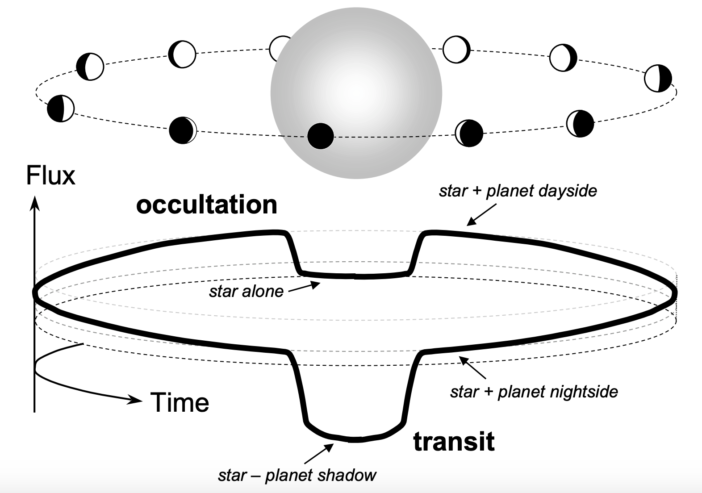
Figure 1: Diagram showing a typical light curve for a planet orbiting a star that is observed using the transit method. The primary dip in brightness occurs when the planet passes in front of the star, and a secondary dip in brightness occurs when the planet passes behind the star. This is because, when not directly in line with the star, the planet will reflect some of the light from the star, increasing the observed brightness of the whole system. [Winn 2010]
However, there was a time when Winn thought his own career would go in a completely different direction; he only began to work on exoplanets near the end of his first postdoctoral position. “I was working on optical physics and optical electronics, and I spent some time studying medical physics. It was in the middle of my third year of graduate school that I started studying astrophysics … so I started working on planets around 2005,” he says.
With this infusion of young people, some may wonder whether they will face a tougher job market in the coming years. Winn experienced similar feelings when switching to astrophysics. He found that it is easy to underestimate yourself, but ultimately discovered that sticking with it is they key to finding success in academia. “It took me a long time, even to choose a field to contribute to and commit to getting a PhD. And at each checkpoint along the way, I figured, ‘Okay, well, now the game’s over,’” he says. “At each point in the way, I proved myself wrong to my surprise. So I don’t think I’m that unusual … most people I talk to tell a similar story to me that we just feel lucky. Don’t worry excessively about whether you’re going to make it to the next level. Just do your best, and realize that there’s a chance and it’s probably higher than you think.”
Find out more at Professor Joshua Winn’s plenary talk, “Transiting Exoplanets: Past, Present, and Future” on Wednesday, June 12 at 8:30 AM at #AAS234.
Professor Elisabeth Mills (interviewed by Mike Foley)
The center of our galaxy is home to an incredible number of stars, lots of gas, and a supermassive black hole. This is region is far from static — it is hot and turbulent and violent. And since this region can’t be observed at optical, ultraviolet, or X-ray wavelengths due to the massive amount of interstellar dust between us and the center, it is also one of the most mysterious. Instead, astronomers must turn primarily to infrared, submillimeter, and radio observations. ALMA has been revolutionary in this area, yielding resolution on scales of thousands of AUs in the center of our galaxy and subparsec scales in galaxies 3–4 megaparsecs away from us. “It’s helping us better understand the center of our own galaxy,” says Elisabeth (Betsy) Mills, a Research Assistant Professor at Brandeis University.
Mills is at the forefront of these studies, focusing on the physical processes responsible for extreme molecular gas conditions in the Milky Way and other nearby galaxies. She first became interested in the galactic center by doing an exploratory Research Experiences for Undergraduates project. She recalls, “My advisor just sort of threw a dataset at me. It was like, ‘Here’s this image that we made of the galactic center. What can we do with it?’ And that summer ended up with me reading everything I could on the galactic center and getting really excited about it.”
Nowadays, the Central Molecular Zone (CMZ), a roughly 300-parsec-wide region in the center of our galaxy, is the focus of most of Mills’ work. Nearly 10 million solar masses of gas are contained in this region, and about 10,000 of those are found in the disk that orbits our supermassive black hole, Sgr A*, at a radius of about 1 parsec. Mills is trying to identify how this gas behaves on scales of hundreds of parsecs down to fractions of a parsec around the black hole. “As gas gets closer to the black hole, even if it’s just orbiting, … you’re going down into this gravitational potential. Because you’re getting closer and closer, you have all of this energy … so the gas gets hotter and hotter. So there’s several ways that we think the black hole can be really messing with its environment,” says Mills.
For example, studies show that stars could have formed long ago at a fraction of a light-year from the black hole. The gas there is much hotter and denser than typical regions of star formation, though, which could mean that star formation proceeds differently in the center of a galaxy than it does in the disk. However, it can be difficult to tell just how rigorous these constraints on star formation are because of uncertainties in the distances to stars and gas in these regions. Determining how far stars and gas are from Sgr A* is challenging since we live in the Milky Way ourselves, as Mills explains: “That means that our view of [the Milky Way]isn’t necessarily edge on. Right? So it can be very hard to actually get that last piece of data in terms of how distant is a piece of gas from the black hole in the center of our galaxy,” she says. “That is the reason why it’s very useful to look at other galaxies.”
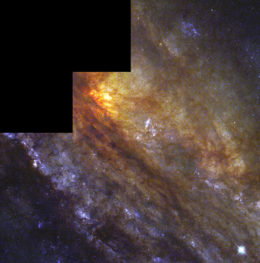
NGC 253 is a nearby starburst galaxy that we can observe the nucleus of in great detail. [HST/NASA/ESA]
One reason Mills is excited about this work is because of its potential to illuminate how most of the stars in the universe formed. While the metallicity in the galactic center is different than in primordial gas, the physical conditions of the gas (temperature, turbulence, density etc.) there could be very analogous to the conditions under which the first stars formed. “This environment … is actually in many ways quite similar to the sort of typical conditions of these high redshift galaxies,” says Mills. “And then this becomes a question of not just do stars form weirdly in the center of our galaxy, but is there something we can understand about how stars are forming here that was actually the normal mode of star formation in the past?” The centers of galaxies can also give clues about what will happen as the metallicities in the disks of galaxies grow. This means that we can potentially use these regions to study both the past and the future.
There was a time when Mills’ future was uncertain, though. Going into college, she knew that she wanted to be an astronomy major. However, that wasn’t her only interest. She took a year in which she stopped doing astronomy and started working towards a Bachelor of Fine Arts in painting. After getting accepted into the program she wanted and finding a studio, she realized that it wasn’t as fulfilling as she had hoped. She was drawn back to astronomy and the challenge that it gave her. She still maintains her artistic side, and enjoys spending a lot of time thinking about the visuals that go into communicating science. When asked about advice she has for other students who are considering pursuing a different field or interest, Mills emphasized the importance of spending time giving your alternative plan a fair shot. “For me, it was very important just to fully try it out. There were those couple of semesters where I really just stopped taking the physics and astronomy courses and just went all in on trying to do art. In the end, there’s nothing wrong with keeping multiple interests going at the same time, but I think it’s important to give something that you think you might want to do a fair go,” she says.
She has found that putting time and work into different activities is the best way to discover how you truly feel about them. Public speaking is one example. Mills says that, despite being very excited about giving talks now, she used to be very stressed out about it. Over-preparing for a physics presentation she gave in undergrad changed this for her. “I suddenly realized that, when I was giving that talk, I knew it so well and knew exactly what I was going to say, so I could for the first time start to think on my feet about how I was saying it,” she says. “And it went really well. It’s really important for me to acknowledge my progress as something that is the result of putting work in and something that is totally attainable.”
Find out more at Professor Elisabeth Mill’s plenary talk, “Journey to the Center of the Galaxy: Following the Gas to Understand the Past and Future Activity of Galaxy Nuclei” on Tuesday, June 11 at 4:30 PM at #AAS234.
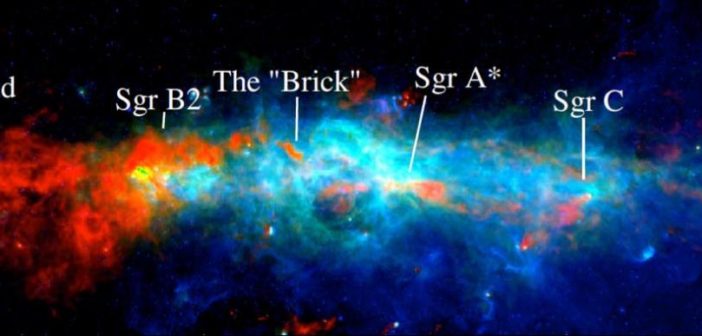
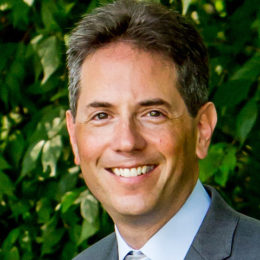
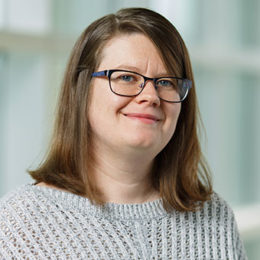
2 Comments
Pingback: AAS 234: Welcome!
Pingback: AAS 234: Day 3